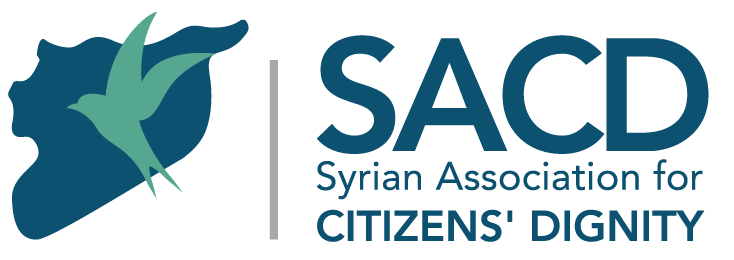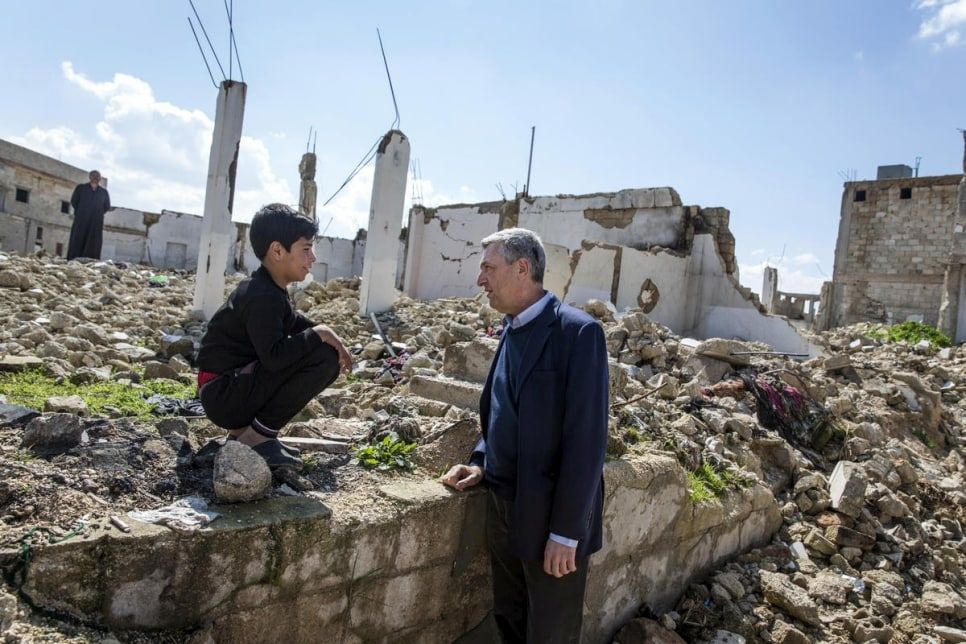The reality in Syria is such that despite the dire conditions Syrians are suffering in displacement, whether internally or in some of the host countries, they are still unwilling to return except for small numbers of those who are forced to do so for various reasons. This is primarily due to the fact that the conditions which caused the displacements are still in place and the Syrian regime continues to repress Syrians in the areas it controls.
In February 2018, UNHCR, the lead UN agency when it comes to return of displaced Syrians, developed the Comprehensive Protection and Solutions Strategy (CPSS) for Syria based on a set of protection thresholds which it said must be met before a safe and dignified return of refugees and IDPs is possible.
Its own position stated in the strategy document is that “present conditions in Syria are not conducive for voluntary repatriation in safety and dignity.”
SACD research and reports of various other Syrian and international organisations – including SNHR, Amnesty International and Human Rights Watch – have systematically documented that the vast majority of protection thresholds are far from being met, painting a dire picture for any refugees or IDPs forced to return before the minimum conditions are in place. In particular, the thresholds “the physical, legal and material safety of refugees and returnees is ensured” and “every individual’s decision to return is informed and genuinely voluntary, without any coercion” are far from being met. SACD has repeatedly called on UNHCR to report publicly on this reality, both to the displaced Syrians so they can make informed decisions about return, but also to international policymakers and donors. To no avail.
Instead, in March 2019, UNHCR drafted a ‘Regional Operational Framework’ document that included indicators for the thresholds but significantly altered the thresholds themselves; including deleting some altogether, altering wording or expanding others, and folding some into other thresholds. The document was only released publicly six months later. The changes create confusion about what exactly the protection thresholds are.
Deleted thresholds cover a reduction in active conflict, the need for an agreement between governments and the agency, returnees access to justice and law enforcement, and mine and UXO removal. There has not been any corresponding change in facts on the ground that would suggest such as change was appropriate. SACD’s research shows that the deleted thresholds and wording relates to thresholds that are not being met and where violations and protection concerns exist for surveyed returnees.
SACD believes the changes are unjustified and reduce the levels of basic security and protection that must be in place before returns are promoted. In direct communication, UNHCR officials have indicated that the original protection thresholds will revert to the language from the 2018 CPSS, but we are yet to see this in reality.
Instead, what we are seeing on the ground is acceleration in planning of a highly problematic initiative referred to as „Area Based Support Roadmap“, which constitutes an approach parallel to the current framework and may spell unparalleled danger to displaced Syrians.
The planning that is being undertaken around “Area Based Support Roadmap“ is veiled in secrecy and has completely excluded consultations with displaced Syrians. According to our information, the plan for its implementation has been validated in April 2022 and it includes concrete plans on pilot projects for return of displaced Syrians to several areas, most of which are in the Syrian regime-held areas, without any significant change in the current circumstance or fulfilment of UNHCR’s own protection thresholds. What is worst, the initiave gives the Syrian regime, which is responsible for the displacement of millions of Syrians, a key role to determine how return should be implemented, including distribution of humanitarian aid.
This is simply staggering. Just several months ago reports by SACD and CSIS on weaponisation of aid by the regime were published, with clear findings on how the Syrian regime interference ranges from directly influencing the aid distribution, deciding who will (and who will not) be the beneficiaries of various projects; to appointing people close to the regime to crucial positions of influence in these organisations to control and monitor their work; to directly appropriating aid to the regime’s military and militias, sometimes in larger percentages than what reaches the intended beneficiaries. The acceptance of such interference permeates all aid organisations, international and Syrian; there is now a dangerous symbiosis between these organisations and the regime’s institutions. We have received firm assurances from donor governments that a regional monitoring mechanism would be put in place to oversee the aid sector to ensure that such practices cease. There is no evidence that they have.
This approach is highly problematic as it proceeds with the current reality described previously as the baseline for return, without a political agreement which would provide for international guarantees for establishment of a clearly defined safe, clam and neutral environment and minimum conditions that must be implemented before any safe, dignified and voluntary return is possible. Such planning threatens to render the any future political solution – whose backbone is in the safe and dignified return of over 13 million displaced Syrians, more than half of the country’s population – meaningless. We call on UNHCR and all involved in this process to revert to the existing framework provided by UNHCR’s CPSS and ensure full transparency and meaningful consultation with displaced Syrians in any planning activities concerning return.
ABRS approach will lead to more pressure on refugees in hosting countries, including the increase in hate speech and dehumanisation targeting refugees, as this has been employed by political parties in countries like Lebanon and Turkey for political gains, while in reality refugees will not be able to return.
Amidst all this, refugees and internally displaced persons (IDPs) lack access to aeven basic independent information about the real conditions in their places of origin. While 87% stated that they had the information they needed for returns decisions, only some 20% said they knew about critical returns procedures that most of them then found to be barriers to return, suggesting the displaced overestimate the quality and depth of information they have available to them for returns decision-making.
In this context, we find the messaging of the UNHCR directed at displaced Syrians deeply problematic. Sometimes even the highest UNHCR officials visiting Syria speak of “people returning and the security situation becoming more stable” or indicating that the Syrian regime should provide security for returnees. This messaging, which omits even a mention of the security threats facing the people in the regime-held areas, is in direct conflict with the reality on the ground and it may put people in danger, especially with the increasingly difficult situation in which Syrian refugees in Lebanon, Turkey and elsewhere find themselves.
If a displaced Syrian, currently facing difficult living conditions in displacement or pressure from the rising anti-refugees sentiment in countries like Lebanon or Turkey, reads this from an agency that is supposed to be the provider of the most accurate and salient information on the conditions for return it is reasonable to expect they will conclude that it must be safe to return. Perhaps difficult, but safe.
The willful exclusion, in these messages, of any reference to the ongoing arbitrary arrests, enforced disappearances and harassment of Syrians in Assad-held areas cannot be interpreted as anything but a blatant failure of the UNHCR’s mandate to “communicate accurate and timely information to potential returnees about conditions, insecurity, and access limitations, leading to ill-informed returns decisions which therefore cannot be considered to be voluntary.“
Nothing best illustrates this from the fact that in the Dara’a governorate, where, according to the UN’s Humanitarian Needs Assessment Programme (HNAP) supposedly the largest number of returnees is recorded, there are literally demonstrations and clashes with the regime security forces over a campaign of arbitrary arrests and forced recruitment of returnees. This has been well documented by the UN Commission of Inquiry and reported on publicly on almost daily basis. People from Dara’a are now fleeing the country on mass and constitute one of the largest populations trying to reach Europe as we speak.
But, this information does not seem to be of relevance for the UNHCR to report. Instead, it keeps ignoring the overwhelming data on the harsh reality facing returnees and informs its potential donors that its strategy will be shifting from “emergency humanitarian response towards return and reintegration and expanded its services to the Syrian returnees.” The impact of this is real and deeply worrying as refugees interviewed by the UNHCR itself increasingly cite “improvements in the security situation, family reunification, and having livelihood opportunities in Syria as the top reasons influencing their decision to return.” As our reports document, nothing could be further from the truth and UNHCR is failing to inform the people it is supposed to protect in order for them to make an informed decision on return. Once they do and face the reality of harassment, persecution, difficult living conditions, absence of basic services and economic opportunity, more than 68% regret the decision to return regardless of the difficult situation in displacement and advise other IDPs and refugees not to return.
With this in mind:
- SACD calls for the immediate reinstatement of the February 2018 thresholds in the revised Regional Operational Framework and full transparency and reporting to affected displaced Syrians on the degree to which they have been met
- UNHCR must be clear about the limits of their access and monitoring capabilities and highlight the gaps in knowledge and risks inherent in this lack of access and monitoring. UNHCR must call for access and make it a pre-condition of any future returns discussion or work. UNHCR must only use contextually relevant information to monitor conditions and should monitor implementation of legislation and announcements in addition to the announcements themselves. UNHCR must work with organizations like SACD to produce and distribute research and monitoring information to Syrian refugees about security concerns and conditions until such time as they are able to do so themselves.
- SACD calls on full transparency on the so called Area Based Return Support planning, which amounts to a parallel track on return work which largely brings into question the utility of the discussions on the new Regional Operational Framework.
- Timely and granular information on the protection thresholds, conditions in areas of return, and the experience of returning refugees and IDPs must be made available to CSOs and refugees through publicly-facing platforms that they can access in their own time when considering returns decisions. Until such time as this can be provided returns cannot be considered to be informed or voluntary.
- Immediately revert to the 2018 language under Phase 1 of the strategy, highlighting that returns should not be encouraged and that facilitation should not occur until the conditions exist under which safe, dignified and voluntary returns can take place and cease programming that could encourage or facilitate premature and unsafe returns.
Read the full briefing here:
Cover photo: UN Refugee Chief Filippo Grandi visits the ruins of Souran and speaks with a young returnee, in Souran, Syria. © UNHCR/Andrew McConnell



